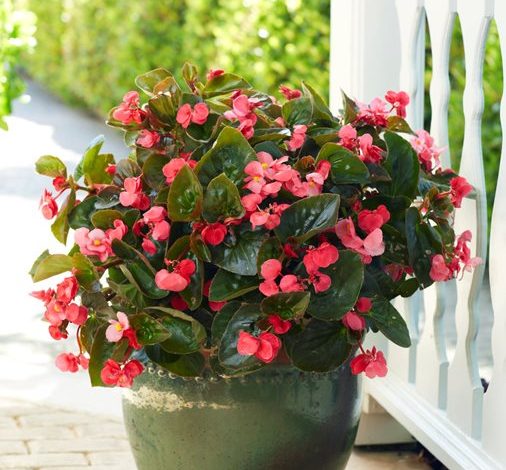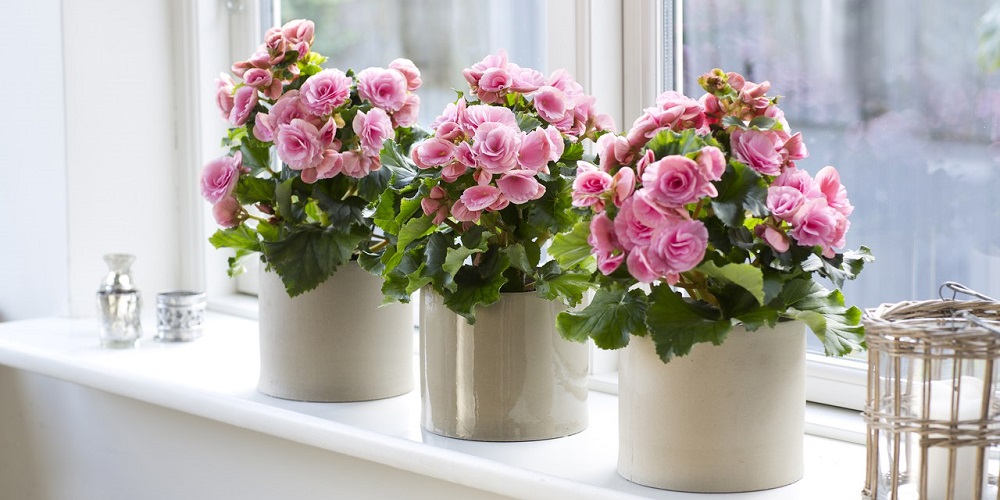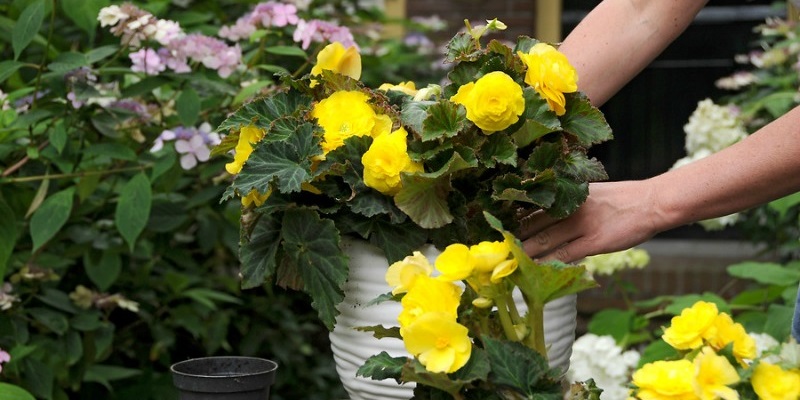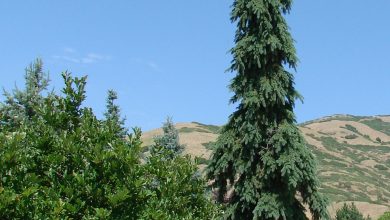Growing and caring for begonia

The begonia is a genus of flowering plants that includes more than 1,500 species distributed in tropical regions of the planet; so it is one of the most numerous that exist. It can be grown in home gardens; however, since it comes from the tropics, special care is necessary.
The begonia plant is a tropical species that includes more than 1,500 species, some of which come from America, Africa and others from Asia. It blooms practically all year round when it finds the right climate; so if it is placed outdoors it can flower from spring to autumn and if it remains inside the house in a pot, it can be seen blooming even in winter.
This plant was discovered in 1688 by a botanical explorer, the monk Charles Plumier, who traveled to the Antilles in order to study the vegetation of tropical areas. This new plant was baptized by the monk with the name of Begonia, honoring Michel Begon, his benefactor.
From that date until now, begonias have been the subject of multiple studies by botanists in order to reproduce and obtain more and more beautiful species. More than 10,000 hybrids or varieties are currently recognized.
Its flowers can be single, double or semi-double and the range of colors covers various shades, from shades of pink to those closer to red, up to white begonia. Although orange and yellow flowers are also available in different shades.
For this reason, it is a particularly popular plant in homes and gardens given its status as an ornamental and perennial species; since it not only stands out for its beautiful flowers , but also for its striking foliage.

Important aspects of begonias
Begonias are usually perennial plants; however, during the winter some go dormant to wake up again when spring arrives.
Among the various types of begonias we have bush begonias, hanging begonias, tuberous begonia, begonia grandis, creeping, rhizomatous, cane-type and flower begonias.
The main characteristic of this plant, regardless of the variety, is that it is a species that prefers to live in the shade (although they need a little heat) and for its optimal development, it requires humid environments.
The most suitable temperature for the life of begonias can range between 17 and 23ºC; that is, mild to warm temperatures. In the case of the Rex begonia, direct sunlight causes the leaves and petals of its flowers to burn, so it is best to avoid exposing it to sunlight. The ideal for all begonias is a shady environment.
Its roots tend to grow wide, close to the surface where it is planted; so if it is about pots, it is preferable to opt for those with a greater diameter than depth. Given the characteristics of its roots, the most suitable soil for this species is one that has loose soil rich in humus.
What you should know about its cultivation
To plant begonias successfully, their cultivation must be done in spring or summer; the idea is to do it once the cold season has passed. Most begonias reproduce easily using stem or leaf cuttings. They can also be grown by means of the rhizome.
It is important to know that these plants develop and grow in shaded environments, but they should not be placed in a dark shade; instead, they should be grown in areas with subdued sunlight or bright shade. Likewise, they are species that do not tolerate frost; so they could die out in the open when temperatures drop.
If you decide to put the begonias in an interior space of the house, it is important to consider that this plant should be placed near windows where it receives sufficient lighting, ventilation and indirect sunlight. Also, avoid placing the pot near heat sources such as radiators.
The soil must have added organic matter or fertilizers (taking care to read the manufacturer’s instructions for its use) and with a neutral PH or with very little acidity.
With regard to irrigation, for all species of begonias, the humidity of the soil and the environment is an important factor for them to prosper; Therefore, irrigation should be controlled according to the season. In summer a greater irrigation will be essential, while in winter a constant irrigation will not be necessary.
It should not be forgotten that these plants need to keep the substrate moist, without flooding it; as it could rot its roots. If the climate is dry, its leaves should be sprayed with water, avoiding wetting its flowers; since this part of the plant is susceptible to fungi.

Care and maintenance
Its maintenance is usually simple; however, as they are tropical plants, they need special care when they are grown under different climatic conditions.
Caring for and monitoring its flowering will depend on the particular species; since it could be the case that the plant does not bloom because it is an outdoor begonia that is inside the house. Therefore, each variety needs a suitable habitat to flourish.
Regarding the pruning. It is important to consider that begonias should not be pruned, only the flowers and dry or withered leaves should be removed; as they could be subject to parasitic infections. When they are cut, proper garden tools should be used.
Another care of the begonia is related to the soil, this must be well drained in order to prevent the water from stagnating and causing diseases related to fungi.
If you want to fill that part of your garden that is in the shade with beautiful flowers, the begonia could be the perfect plant to fill those areas of your green areas with color and beauty.


![Photo of Guide to Plant a Peach Tree: [Complete Step by Step]](https://www.complete-gardening.com/wp-content/uploads/2022/08/guide-to-plant-a-peach-tree-complete-step-by-step-390x220.png)
![Photo of Runner Thistle: [Cultivation, Irrigation, Care, Pests and Diseases]](https://www.complete-gardening.com/wp-content/uploads/2022/08/runner-thistle-cultivation-irrigation-care-pests-and-diseases-390x220.jpg)
